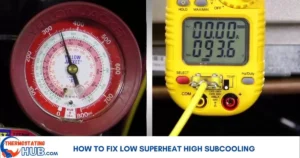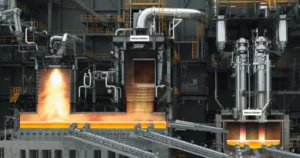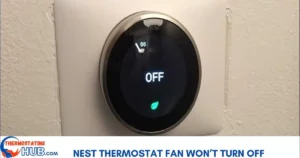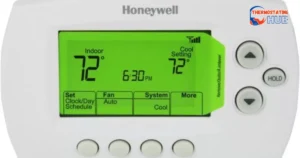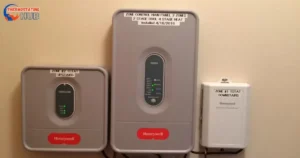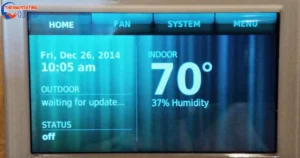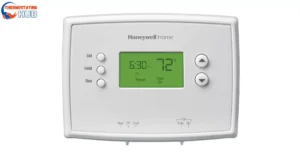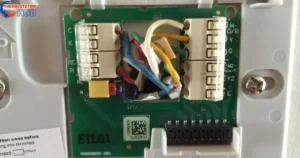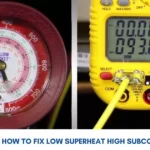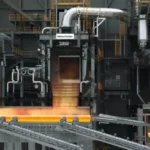If you’ve spotted ‘Auxiliary Heat’ or ‘Aux Ht’ on your Honeywell thermostat and are curious about its meaning, this guide is for you. Here, we’ll delve into what auxiliary heating signifies on a Honeywell thermostat and how it collaborates with a heat pump.
In essence, when you see ‘auxiliary heat’ on a Nest thermostat, it indicates that a heat pump is using additional heating to effectively warm your home or office. This auxiliary heat usually activates when the outdoor temperature falls below the recommended operating conditions for a heat pump, often below 32 degrees.
Understanding when auxiliary heat comes into play is crucial in comprehending its purpose and function. It’s essential to grasp the conditions under which aux heat engages to optimize its usage.
Pro Tip: Keep your heat pump well-maintained and ensure proper insulation in your home to reduce reliance on auxiliary heat, thereby saving energy and costs.
Conditions under which auxiliary heat will turn On
The auxiliary heating doesn’t always activate; specific conditions trigger its automatic operation. These conditions include:
- Non-operational Compressor: If the outdoor condenser unit isn’t functioning or lacks power, the auxiliary heat kicks in. However, if the outside unit is working properly, the auxiliary heat remains inactive.
- Frozen Outdoor Condenser Unit: When a heat pump starts with a frozen condenser unit, it initiates the defrosting of the coils. To complete this task, the system requires assistance from secondary heat, prompting the auxiliary heat display on your thermostat.
- Extremely Low Temperatures: While heat pumps effectively heat spaces by extracting warmth from outdoor air, there are instances when the outdoor temperature drops significantly. At such times, the heat pump might struggle to transfer adequate heat indoors. In response, the auxiliary heat activates to supplement the heat pump’s efforts, both running concurrently to maintain the desired heating level. 🌡️
Pro Tip: Regularly checking and maintaining your heat pump, especially before colder seasons, can prevent issues triggering auxiliary heat, ensuring efficient heating without unnecessary energy consumption.
Is auxiliary heat good or bad?

Auxiliary heat serves as a secondary source that supplements the primary heat produced by your heat pump. It kicks in when the heat pump struggles to maintain the desired temperature. However, auxiliary heat can be costlier, ranging from 2 to 5 times more expensive than the heat generated by the heat pump itself.
Typically, auxiliary heating becomes necessary during extreme weather conditions when the heat pump alone isn’t efficient enough to provide adequate warmth. In such cases, there’s an option to manually activate an additional heating source, known as Emergency Heat.
In simpler terms, engaging auxiliary heat manually is termed as Emergency Heat. 🚨
Pro Tip: Keep auxiliary heat as a backup for severe weather; relying on it constantly can significantly increase your heating costs.
How to turn on and off auxiliary heat on a Honeywell thermostat.
It’s important to note that not all heat pumps are equipped with auxiliary heat capabilities. This option is typically found in units installed with two-stage heating sources. If your system lacks this feature, you won’t find the option displayed on your screen.
Similarly, if you have a standard heating system, such as a furnace alone, this option won’t be visible on your thermostat.
Activating auxiliary heat on your thermostat depends on the model you own. For instance:
T6 Pro Thermostat Model:
To access it, tap on “Mode” from the display’s bottom left.
- Scroll to choose “EM Heat” (available for heat pump systems equipped with this function).
RTH6500WF:
- Press “System” and select “Em Heat” for heat pumps with auxiliary heat, managing the auxiliary or emergency heat.
Pro Tip: Ensure you have the right thermostat model and system setup before attempting to activate auxiliary heat to avoid unnecessary adjustments.
Troubleshooting Auxiliary heat blowing cold air on heat
At times, when you activate auxiliary or emergency heat, you might observe cold air blowing despite setting it for warmth. This issue can stem from various reasons: a tripped circuit breaker, incorrect thermostat wiring, or defective heating elements.
Pro Tip: Ensure your thermostat is correctly wired and schedule regular inspections to prevent such heating issues.
Tripped circuit breaker
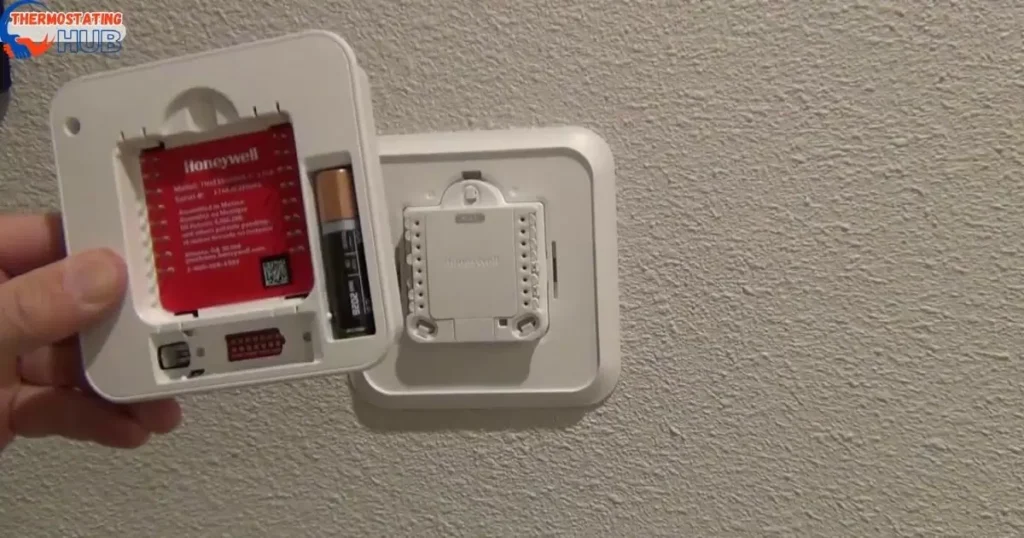
Auxiliary heating sources typically operate using heating elements connected to the power supply. If power to these heating elements is interrupted, you won’t get heat from the auxiliary source.
To resolve this issue, follow these steps:
- Check the circuit breaker dedicated to auxiliary heat. Reset it if it has tripped.
- If resetting the breaker doesn’t solve the problem, inspect for any other switches responsible for supplying power to the auxiliary heating system.
Pro tip: Regularly inspect and maintain your auxiliary heating system to prevent unexpected disruptions and ensure continuous warmth during colder periods. 🔥
Incorrect thermostat wiring
Heat pumps that come equipped with auxiliary heat function differently regarding thermostat wiring compared to systems lacking a secondary heating source. In such systems, specifically those with emergency or auxiliary heat, an extra wire needs to be connected to the W2 terminal in addition to the wires linked to the compressor relay connectors.
Pro tip: When dealing with heat pump systems with auxiliary heat, ensure the proper connection of an additional wire to the W2 terminal to enable the efficient functioning of the secondary heating source.
Read also: Turn Off Temporary Hold On Honeywell Thermostat in 3 Clicks
Defective elements
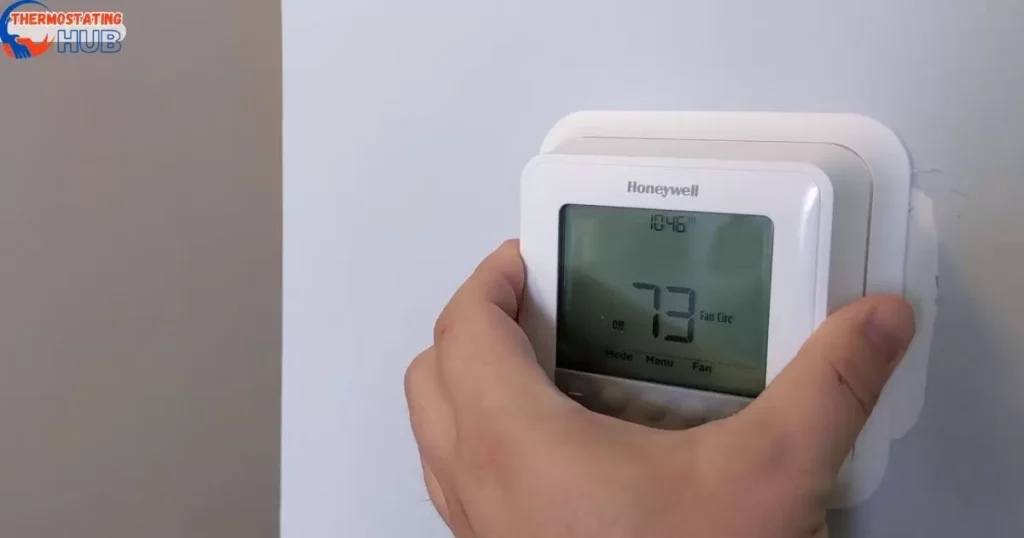
Here’s the rewritten text following the guidelines:
If your auxiliary heating blows cold air, it could be due to a defect. Though rare, it can happen, especially if you frequently use the aux or if your system is old.
Auxiliary heating operates by using electrical resistance to generate heat, warming the air as it passes through the heat exchange. Similar to how oven elements use electrical resistance to heat up, these components are prone to wear and tear, potentially causing damage over time. 🔥
Pro Tip: Regular maintenance checks can help prolong the life of your auxiliary heating system. Cleaning and inspecting these elements periodically can prevent potential issues and ensure efficient performance.
Unveiling Honeywell Thermostat’s Auxiliary Heat Insights
Understanding your Honeywell thermostat’s auxiliary heat function can make a big difference in managing your home’s comfort. Auxiliary heat is a backup heating system that kicks in when your primary heat source isn’t sufficient, especially during extreme cold. It ensures your home stays warm by supplementing your main heat pump.
When the outdoor temperature plunges, the heat pump may struggle to extract enough heat from the air. This is where auxiliary heat steps in, using a secondary heat source—often electric heat strips—to provide that extra warmth. However, keep an eye on your thermostat settings; using auxiliary heat excessively can lead to higher energy bills.
To optimize its usage, set your thermostat’s temperature a few degrees higher than usual in colder weather, allowing the auxiliary heat to kick in when necessary.
It’s essential to check and maintain your system regularly to ensure efficient operation. Dirty filters or malfunctioning components can impact how well auxiliary heat functions. Understanding when and how to use this feature can keep your home cozy while helping manage energy costs effectively.
Read also: Honeywell hz311 troubleshooting Red Light
The Pros and Cons of Honeywell Thermostat’s Auxiliary Heat
Certainly! Here’s a table outlining the pros and cons of Honeywell Thermostat’s Auxiliary Heat:
| Pros | Cons |
| Efficient heating in extreme cold temperatures | Increased energy consumption |
| Helps maintain consistent indoor temperatures | Higher electricity bills in some cases |
| Provides quick heating when the primary heat source isn’t sufficient | Auxiliary heat can be costly to run |
| Prevents uncomfortable temperature fluctuations | Potential wear on the heating system |
| Ensures comfort during temperature dips | May require professional installation or setup |
Auxiliary heat in Honeywell thermostats offers efficient heating during extremely cold weather, ensuring consistent indoor temperatures and providing quick heating when the primary source isn’t enough. It also prevents uncomfortable temperature fluctuations.
However, it may lead to increased energy consumption and higher electricity bills for some users. Additionally, running auxiliary heat can potentially wear down the heating system and might require professional installation or setup.
Mastering Honeywell Thermostat: Expert Advice for Auxiliary Heat Control
Mastering your Honeywell thermostat’s auxiliary heat control is essential for efficient heating. Firstly, familiarize yourself with the thermostat’s settings. Find the option to control auxiliary heat—it’s often labeled as “Aux Heat” or “Emergency Heat.” Understand that auxiliary heat activates when your primary heat source struggles to maintain the set temperature.
To optimize its use, set the temperature within a reasonable range. Avoid extreme temperature fluctuations that trigger auxiliary heat frequently, as this can increase energy consumption.
Additionally, during milder weather, lower the thermostat setting to prevent unnecessary activation of auxiliary heat. Regularly check and replace air filters, as dirty filters can impede the system’s efficiency, causing increased reliance on auxiliary heat.
Furthermore, leverage the thermostat’s programming features. Create schedules aligned with your daily routine to minimize the need for auxiliary heat. Consider investing in a smart thermostat that learns your preferences and adjusts settings automatically for optimal energy use.
Lastly, if unsure about settings or usage, consult the thermostat’s manual or seek advice from a professional to maximize its efficiency and comfort in your home.
FAQs
Why does my thermostat go to aux heat?
Thermostats activate auxiliary (aux) heat when the temperature difference between the set temperature and the actual room temperature is significant. This happens to quickly reach the desired temperature, especially during extremely cold weather or when the primary heat source isn’t sufficient.
Is it bad if the auxiliary heat comes on?
No, it’s not bad if the auxiliary heat (aux heat) comes on. It’s a backup system designed to assist your primary heating system during cold conditions. However, excessive or prolonged use of auxiliary heat might lead to higher energy costs.
When should I use auxiliary heat?
You should use auxiliary heat when the temperature is considerably lower than the set temperature and your primary heating system struggles to maintain the desired temperature on its own. It’s typically activated automatically by the thermostat when needed.
How do I turn off the auxiliary heat on my Honeywell thermostat?
The method to turn off auxiliary heat on a Honeywell thermostat might vary based on the model. Generally, you can adjust the settings using the thermostat’s interface. Look for options related to “auxiliary heat” or “emergency heat” in the thermostat’s menu and set it to your preferred setting, which could be “Off” or a lower temperature differential setting. Refer to the Honeywell thermostat’s manual for specific instructions based on your model.
Conclusion
By now, we trust you’ve grasped the concept of auxiliary heat on your Honeywell thermostat and know how to activate or deactivate it. It might be beneficial to refer to your thermostat’s user manual for further details.
Pro Tip: Familiarizing yourself with your thermostat’s manual can provide additional insights and functionalities for efficient use. 🌟

I’m James Wilson, your HVAC maestro from “Thermostating Hub.” Elevate your comfort with my expertise in heating, ventilation, and air conditioning. Let’s transform your space into a haven of perfect temperatures, tackling HVAC issues with precision and enthusiasm.




